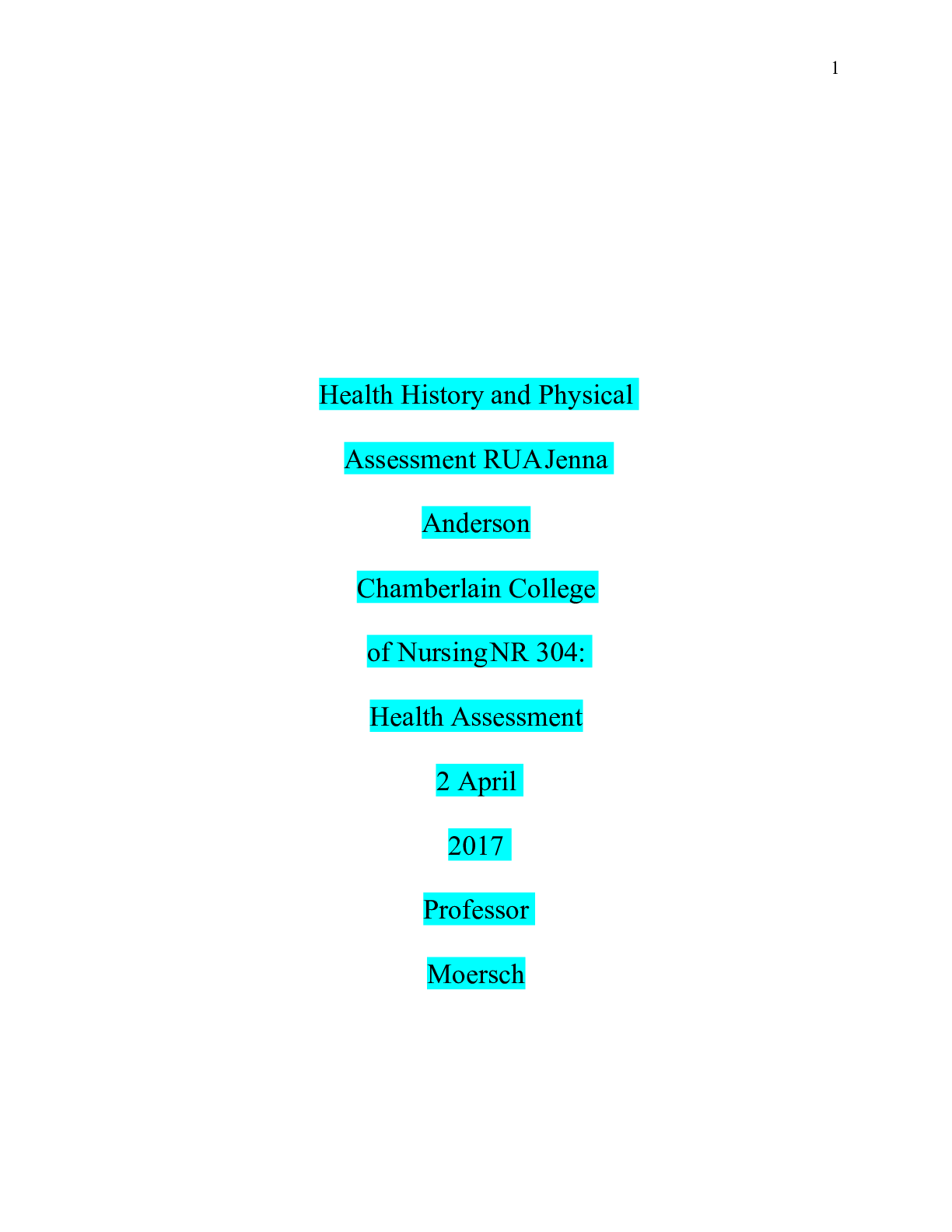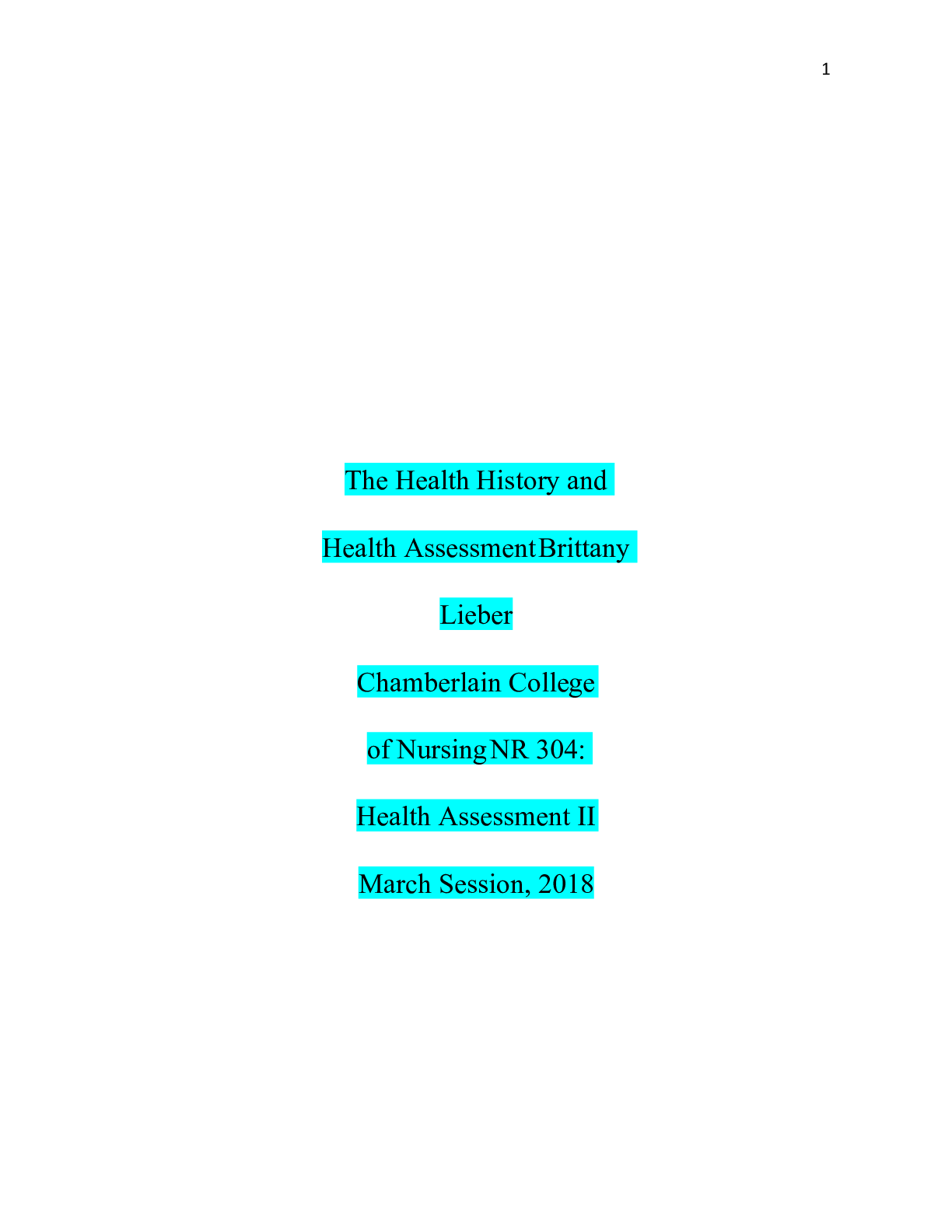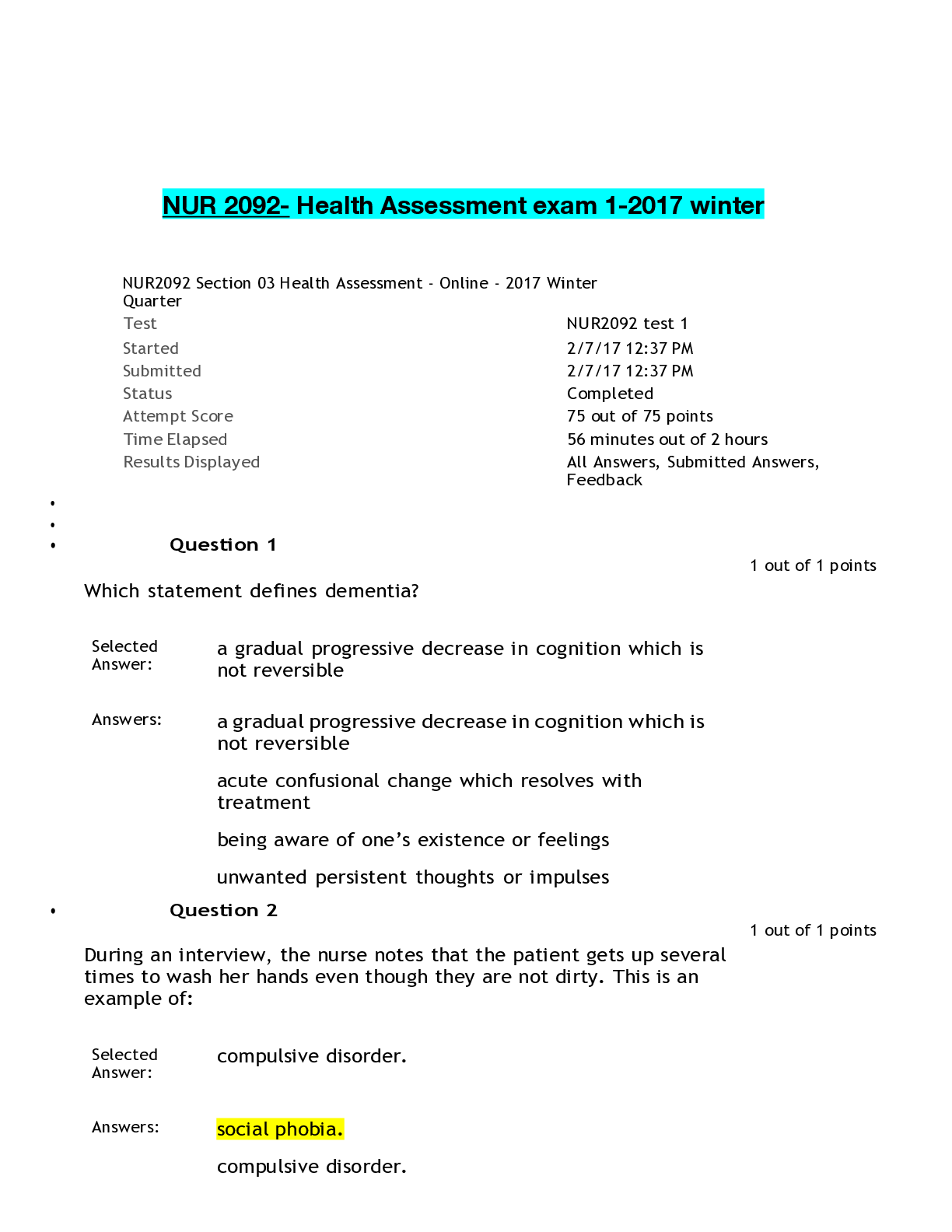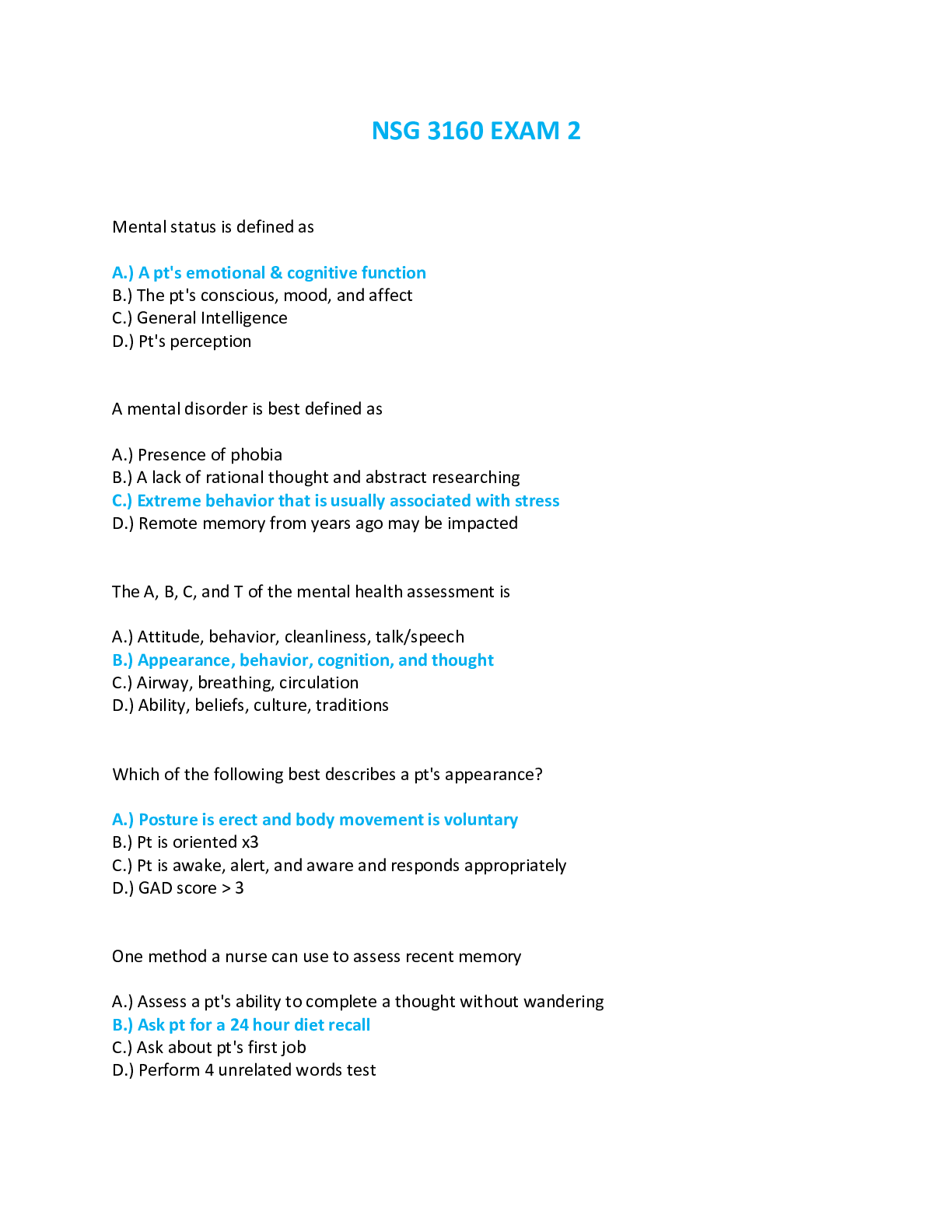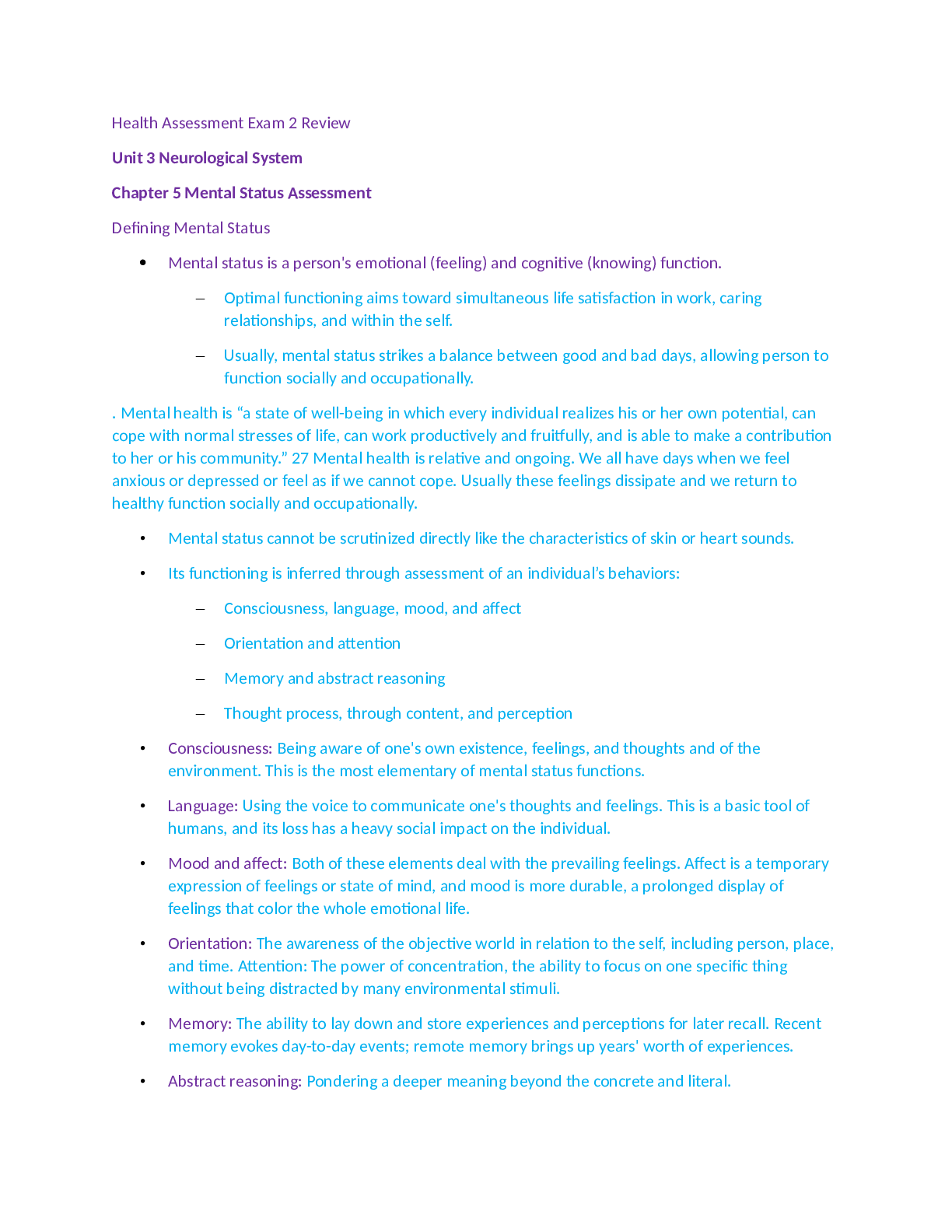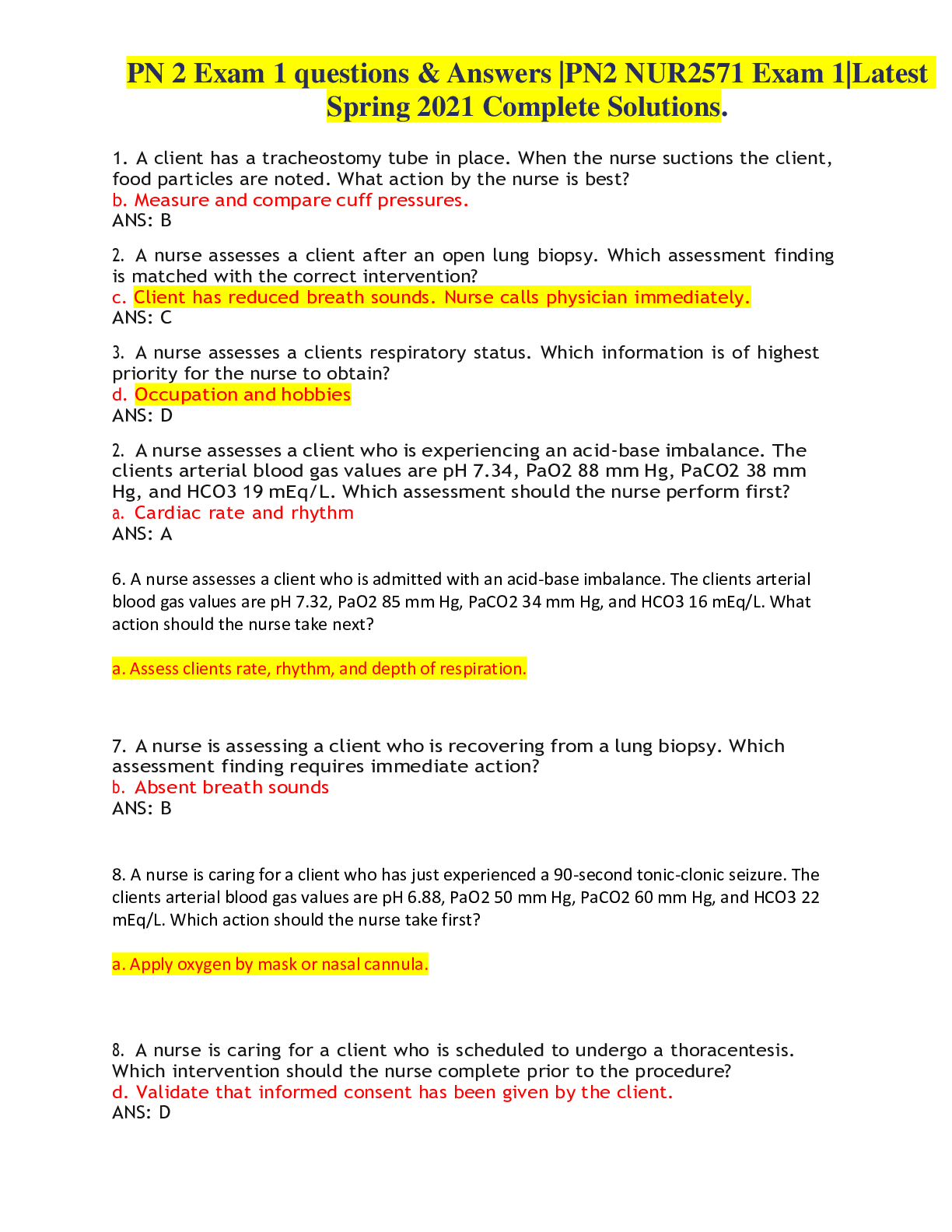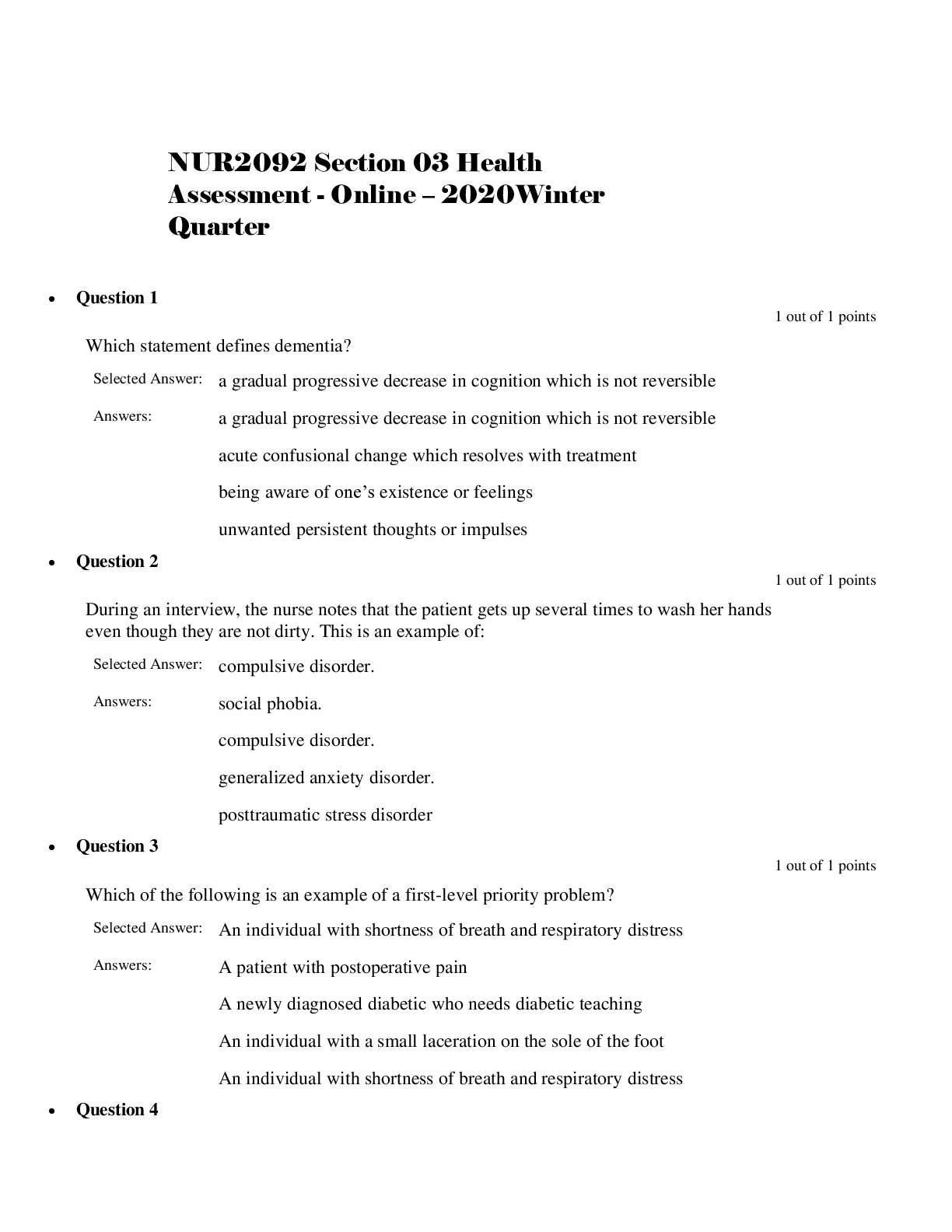HESI V1 & V2 REVIEW - Health Assessment 1 Questions & Answers
Document Content and Description Below
HESI V1 & V2 REVIEW - Health Assessment 1 Questions & Answers-The nurse is performing a thoracic assessment on a client with chronic asthma and hyperinflation of the lungs. Which finding should be exp... ected for this client? - Barrel chest The nurse is assessing bowel sounds for a hospitalized client. The nurse has heard bowel sounds in the right upper quadrant. What action should the nurse take next? - Note the character and frequency of bowel sounds During inspection of a client's mouth and pharynx, the nurse places a tongue blade on the back of the tongue which causes the client to gag. After removing the tongue blade, what action should the nurse take? - Document an intact gag reflex. When teaching a client how to perform a monthly breast self-assessment, the nurse should tell the client that it is most important to assess which part of the breast more closely for changes? - Upper outer quadrant. The nurse is assessing a postmenopausal client who has a BMI of 32. The client has a chest measurement of 42 inches, waist measurement of 45 inches, and hip measurement of 50 inches. What important message should the nurse explain to the client to promote health promotion? - A waist circumference is greater than 35 inches in women puts you at higher risk for type 2 diabetes and heart disease." The nurse performs a physical assessment on an older female client. Which change from the prior exam may be an indication of osteoporosis? - Height reduction of 1.5 inches. While conducting an interview to obtain a health history, the nurse notices that the client pauses frequently and looks at the nurse expectantly. Which response is best for the nurse to provide? - Sit quietly to allow the client to respond comfortably. A client is in the clinical for a yearly physical examination. Which action should the nurse take when preparing to examine the client's abdomen? - Ask the client to urinate before beginning the examination. Which respiratory condition should the nurse document after measuring a respiratory rate of 8 breaths/minute? - Bradypnea. Which procedure should the nurse use to assessfor a pulse deficit? - Measure the apical pulse and compare it to the peripheral pulse. *A pulse deficit is a palpable difference between the apical pulse at the point of maximal impulse and the radial pulse palpated at the wrist. A client has been diagnosed with bilateral lower lobe atelectasis. What percussion sound should the nurse expect to hear when percussing over the client's lower lobes? - Dull, thud-like. A client is being assessed upon admission to the medical-surgical unit. The nurse is preparing to complete a head-to-toe assessment and will begin at the head of the client. Which technique should the nurse use to begin the assessment? - Inspect the hair and skin. The nurse is assessing a healthy young adult during an annual physical examination. Which assessment technique should the nurse implement when palpating the abdominal aorta? - Deep palpation above and to the left of the umbilicus. The nurse is conducting a family history as part of the assessment interview. Which action should the nurse take to ensure that sufficient information about the client's blood relatives is obtained? - Document at least 3 generations of the client's family medical history. The nurse is testing the client's shoulders for range of motion. What should the nurse document to record normal internal rotation? - Range of 90 degrees when the hands are placed at the small of the back. A client presents with a rash along the occipital area of the hairline and reports intense itching. How should the nurse begin the objective part of the examination? - Inspect the scalp looking for nits. The nurse is assessing a client's range of motion as the client bends the right knee up to the chest while keeping the left leg straight, but is unable to keep the left thigh on the table. The assessment is repeated for the left knee, and the client is unable to keep the right thigh on the table. How should the nurse document this finding? - A flexion deformity referred to as a positive Thomas test. During a skin asssessment, the nurse notes, round and discrete lesions that are dark red in color and will not blanch. The lesions range from 1 to 3 mm in size. What is the first question the nurse should ask the client? - Have you notice any irregular bleeding A client with progressive hearing loss appears distressed when the registered nurse (RN) asks open-ended questions about the client's health history. Which forms of communication should the RN use? - Face the client so the client can see the RN's mouth. Check if the client's hearing aides are working properly. Reduce environmental noise surrounding the client. A client states that she had a mastectomy of her left breast last year and now experiences lymphedema. What should the nurse expect to find when examining the client? - Swelling of the left arm and non-pitting edema. A client has just returned from the recovery room and asks to get out of bed to go to the bathroom. The nurse decides to obtain orthostatic vital signs first. How will the nurse position the client to begin this procedure? - Lying. A postmenopausal female client is undergoing a routine physical examination. She has reported nothing out of the ordinary. When performing the examination of the genitourinary system, the nurse finds an irregularly enlarged uterus with firm, mobile, painless nodules in the uterine wall. How should the nurse explain this finding to the client? - You have benign fibroid tumors, a common occurrence in women your age. A client is reporting chest pain. What statement made by the client, helps the nurse to understand this client has a naturalistic belief in the cause of illness? - "My life is really out of balance." The nurse is preparing to assess the hearing of a client with a history of prolonged exposure to occupational noise. Which hearing test provides the most reliable assessment of hearing status? - Audiometry. The nurse is performing a routine physical examination on an adult client. When gathering a health history, which question is included in the CAGE questionnaire? - Have you ever felt guilty about your drinking? *CAGE is the acronym for Cut down, Annoyed, Guilty, and Eye-opener. Nurse can use it to assess for possible alcohol abuse. [Show More]
Last updated: 1 month ago
Preview 1 out of 14 pages
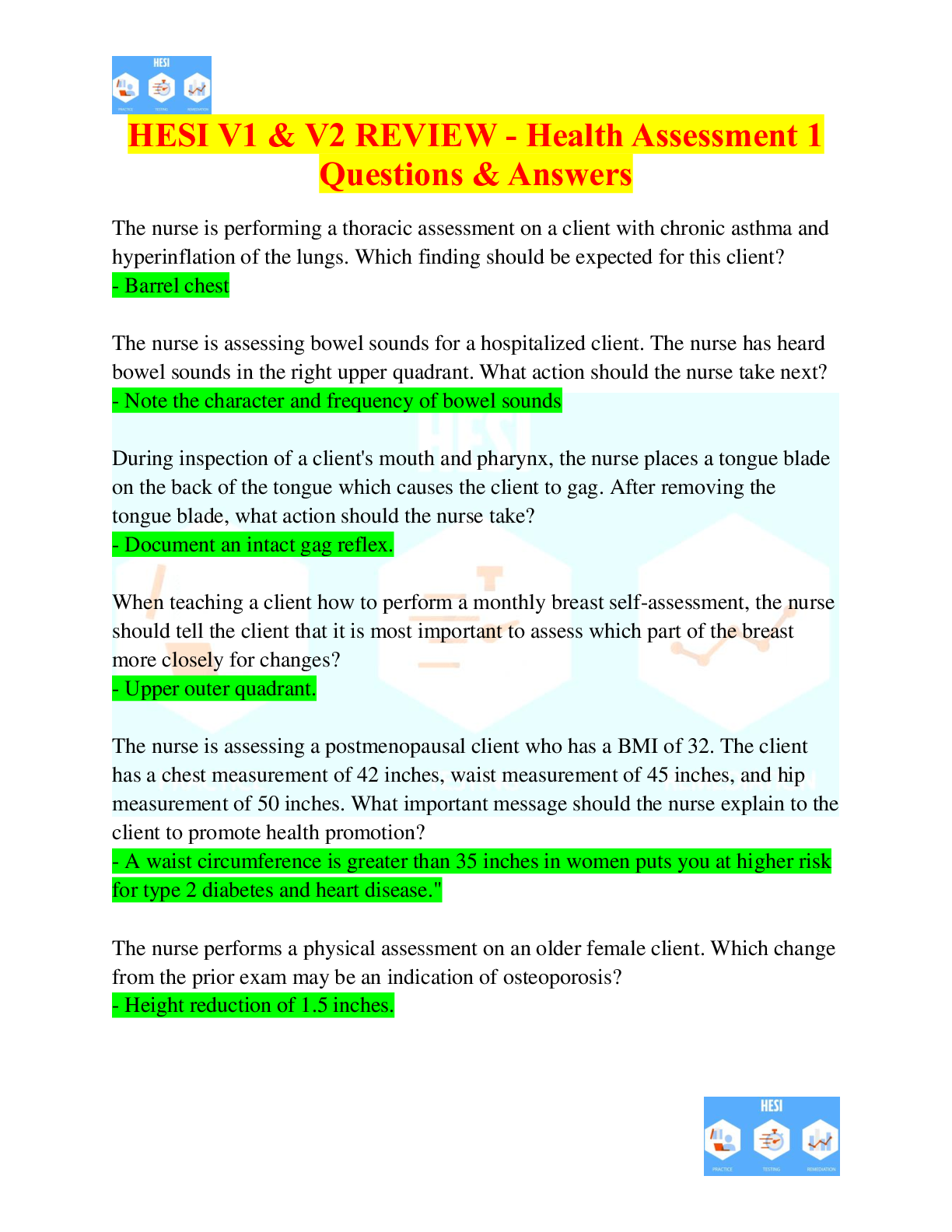
Reviews( 0 )
Document information
Connected school, study & course
About the document
Uploaded On
Apr 07, 2024
Number of pages
14
Written in
Additional information
This document has been written for:
Uploaded
Apr 07, 2024
Downloads
0
Views
8






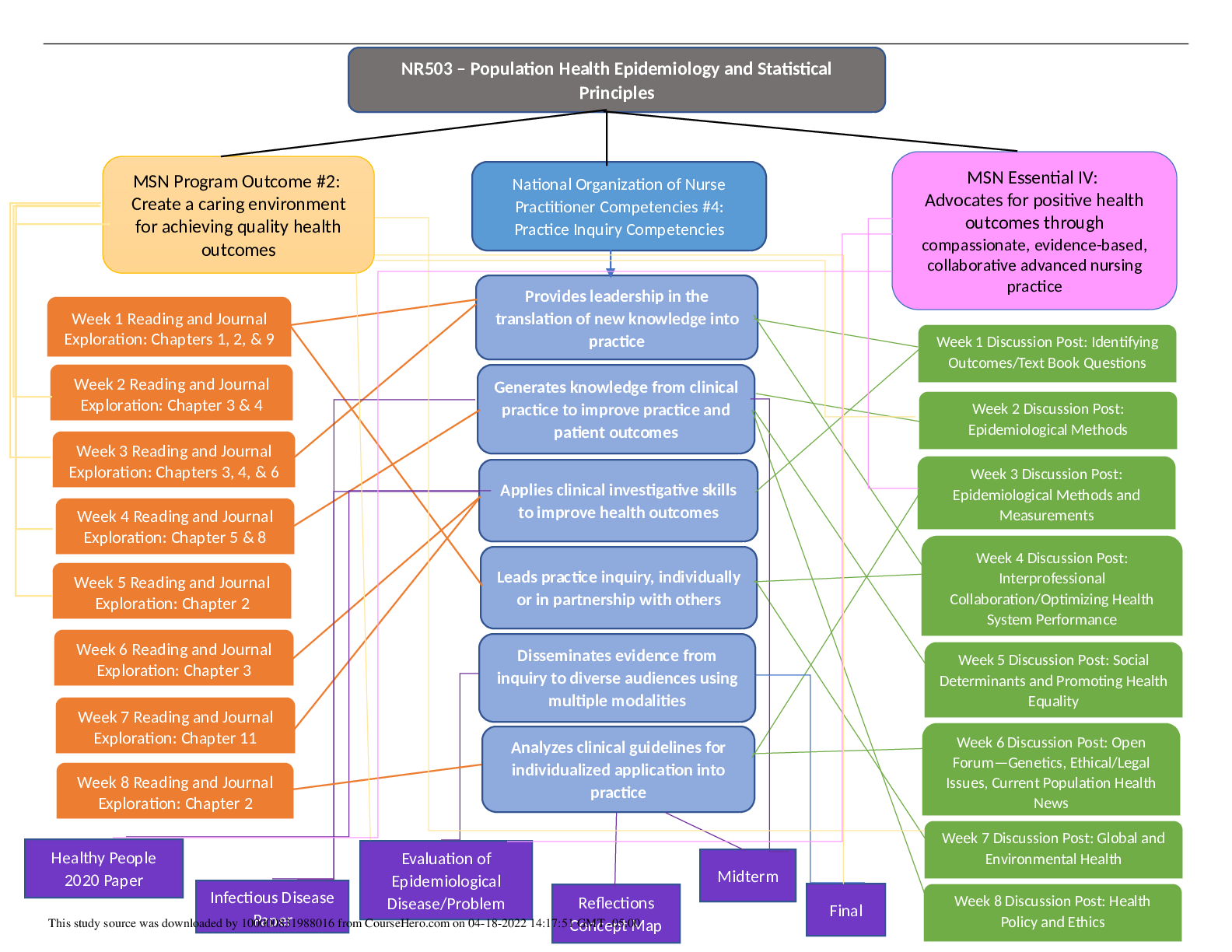

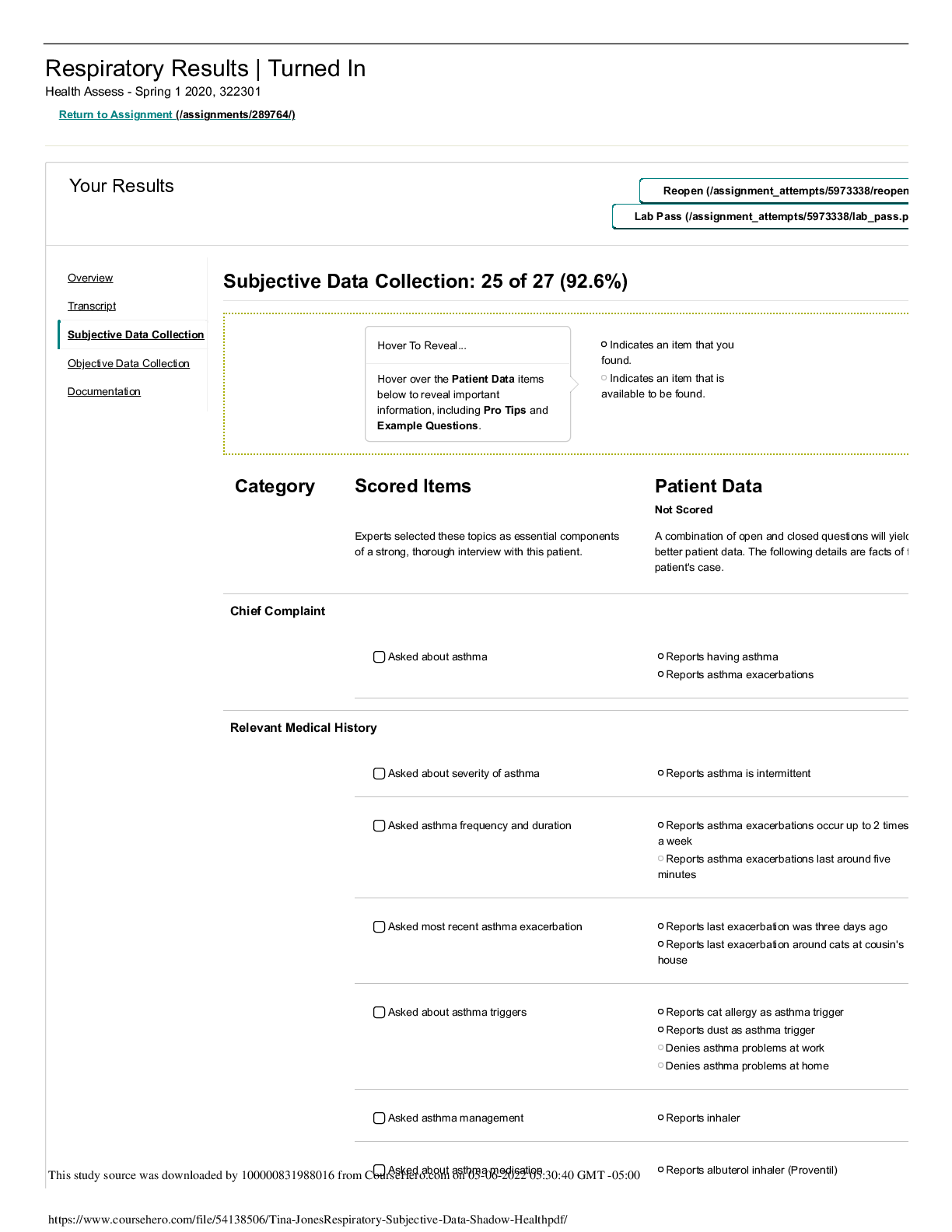
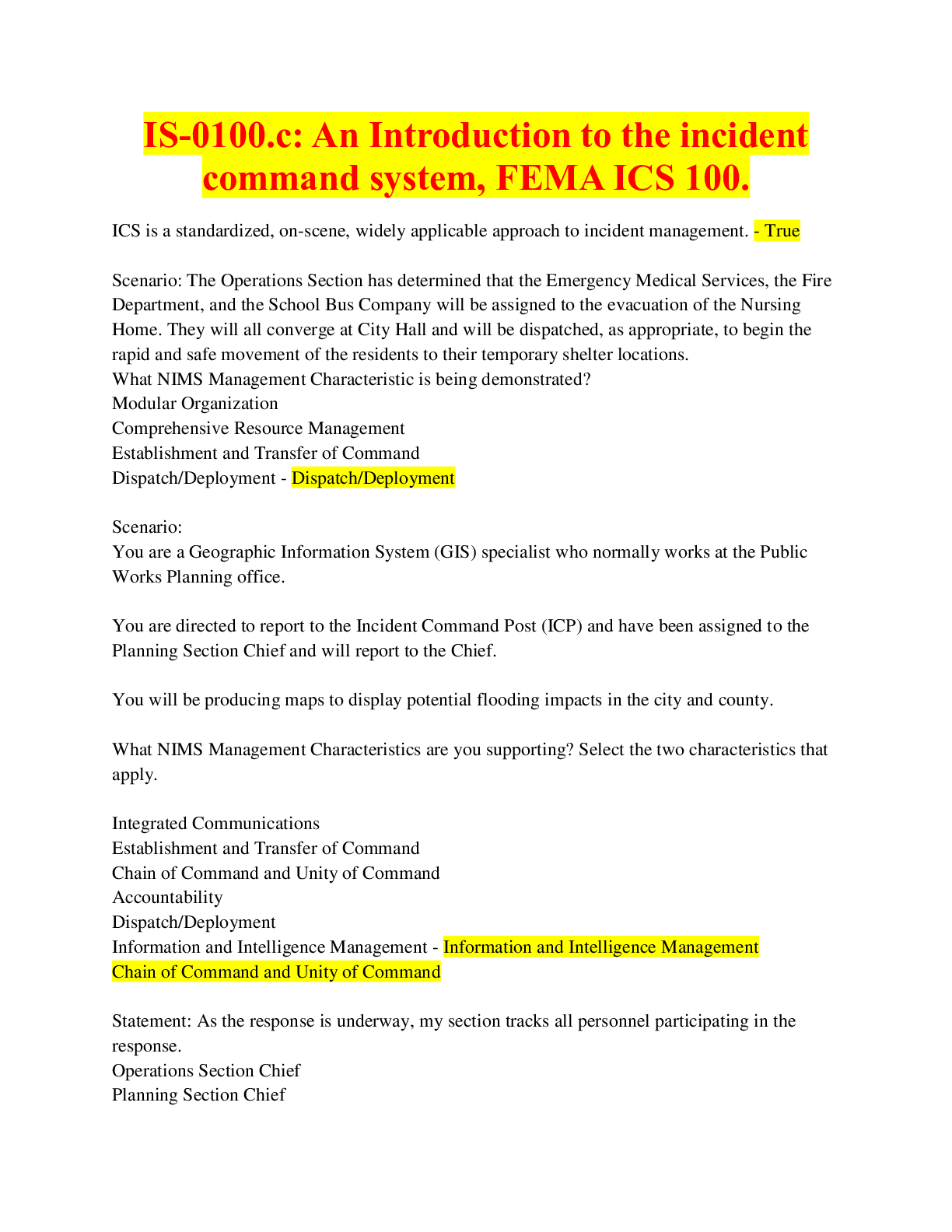



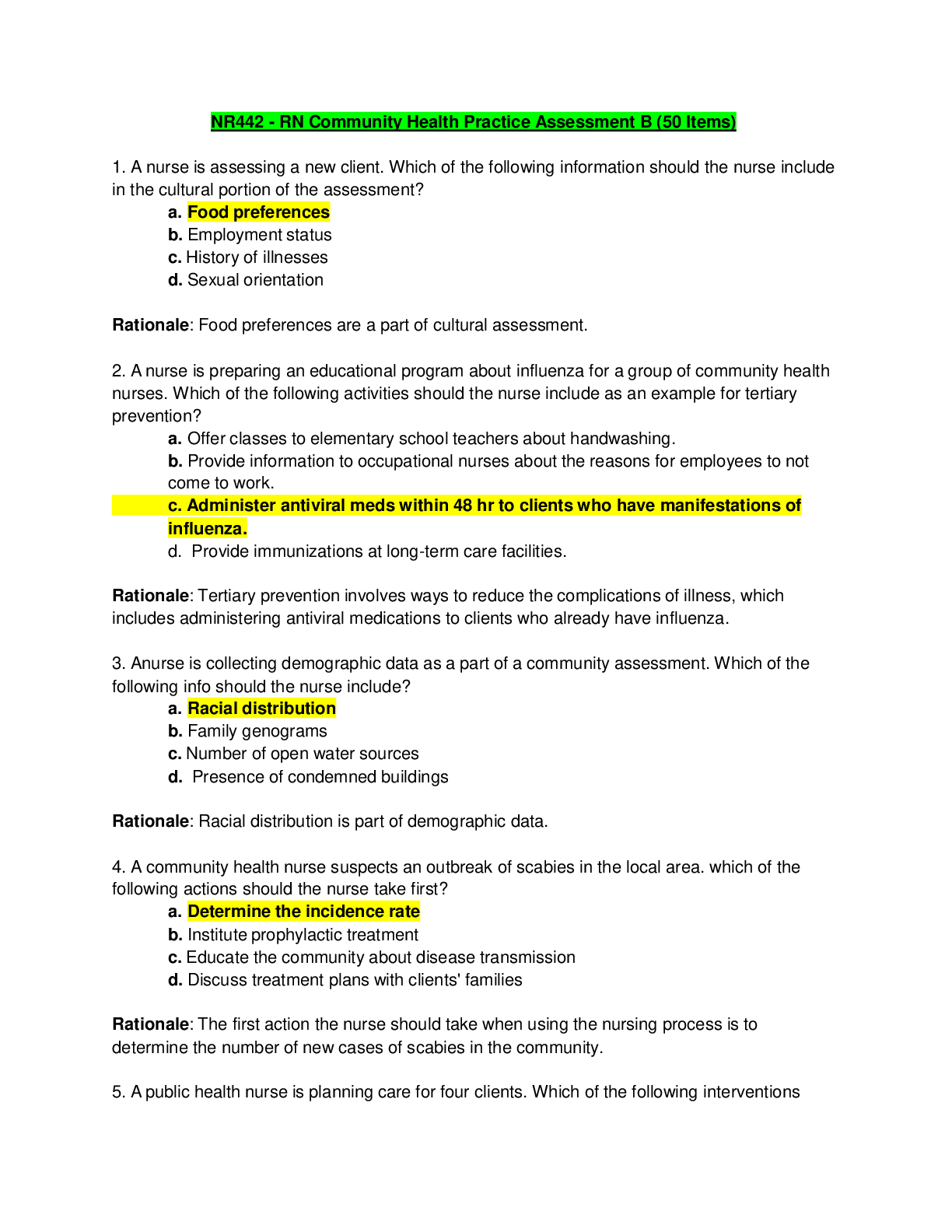

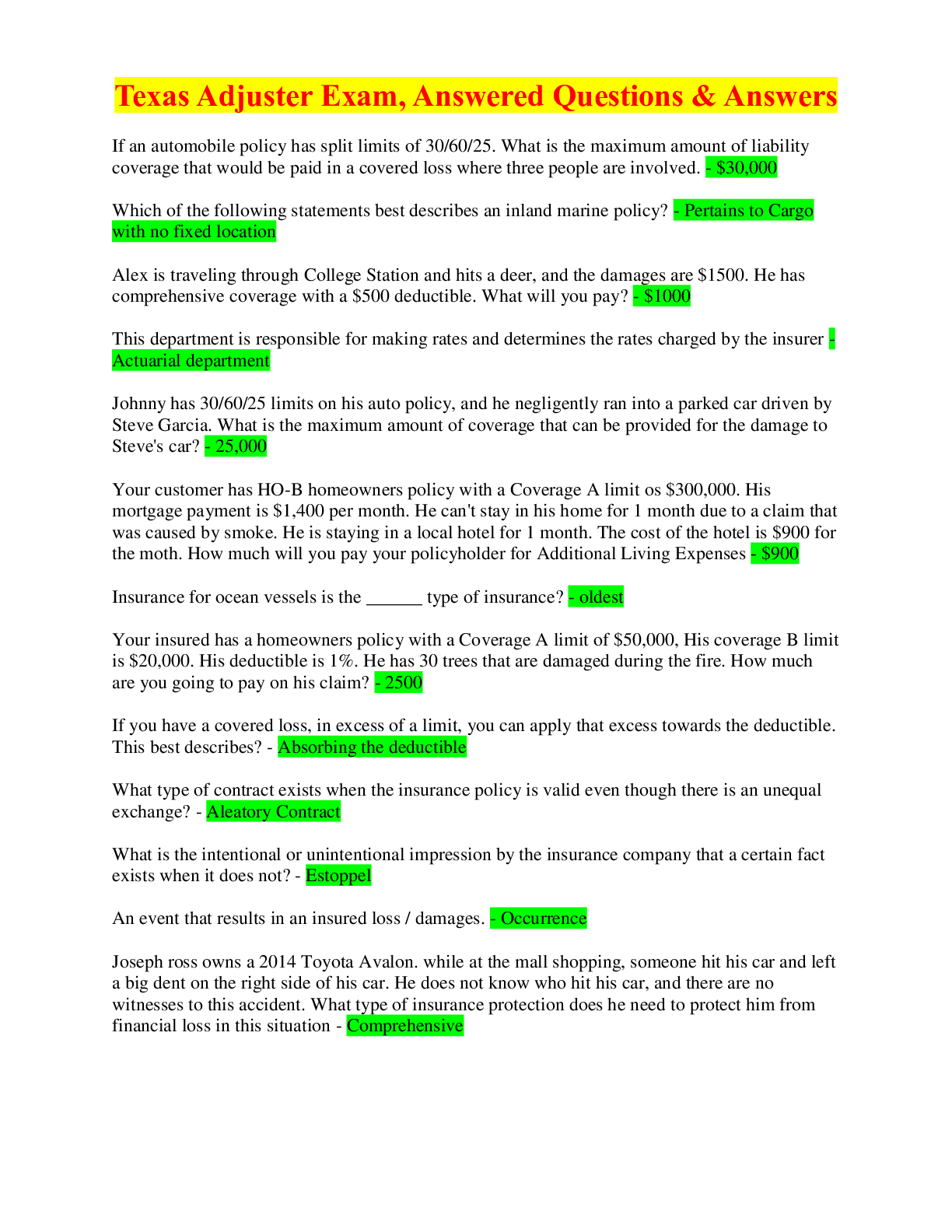
.png)
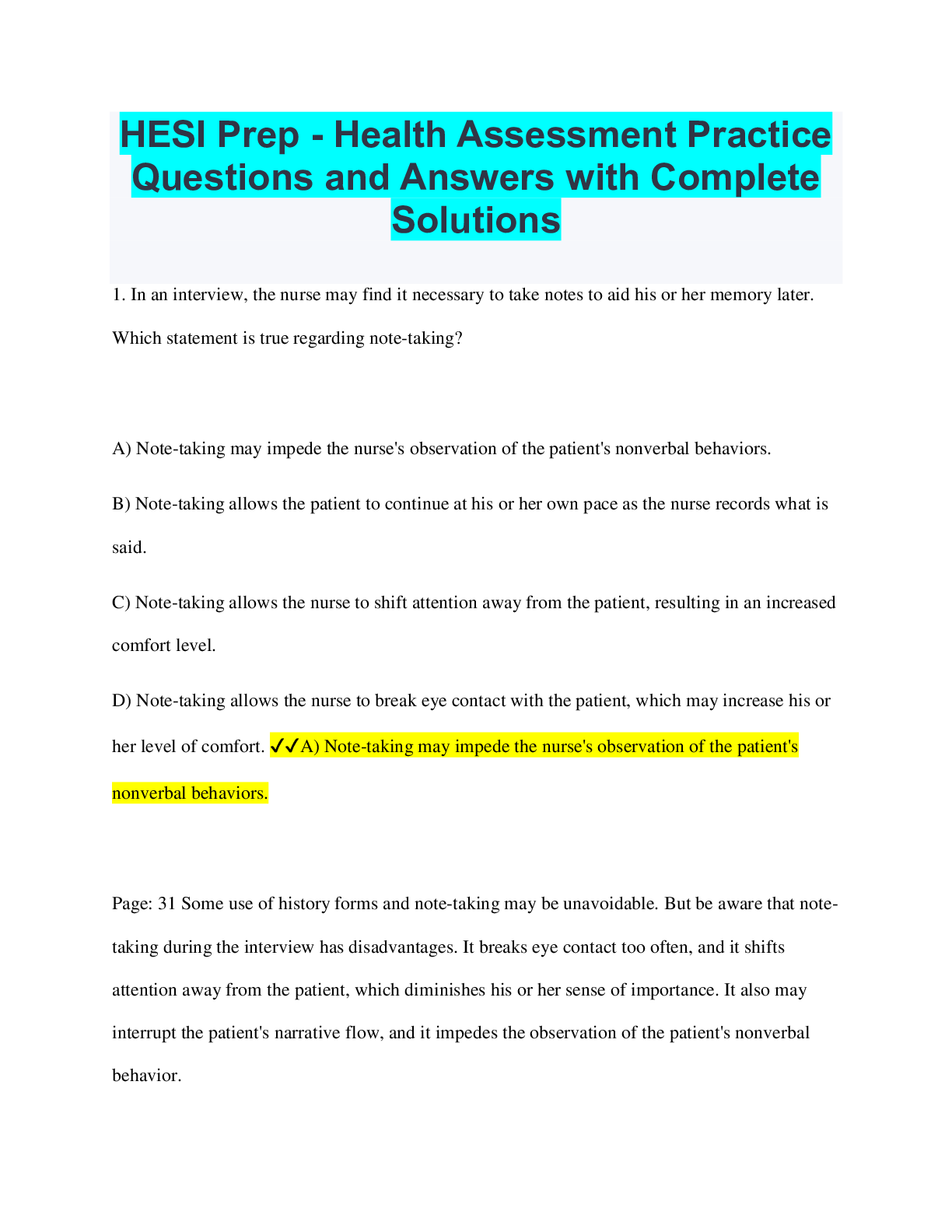
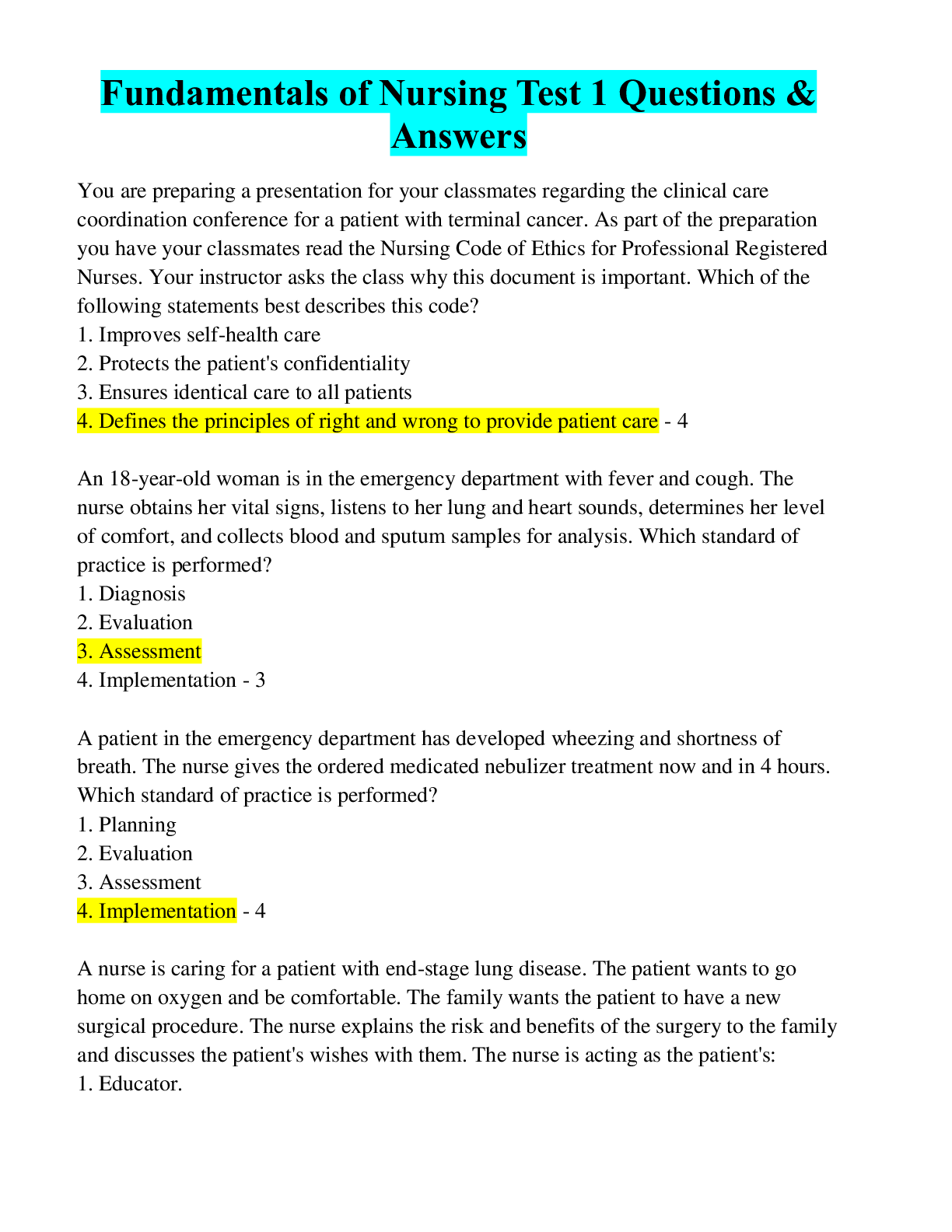

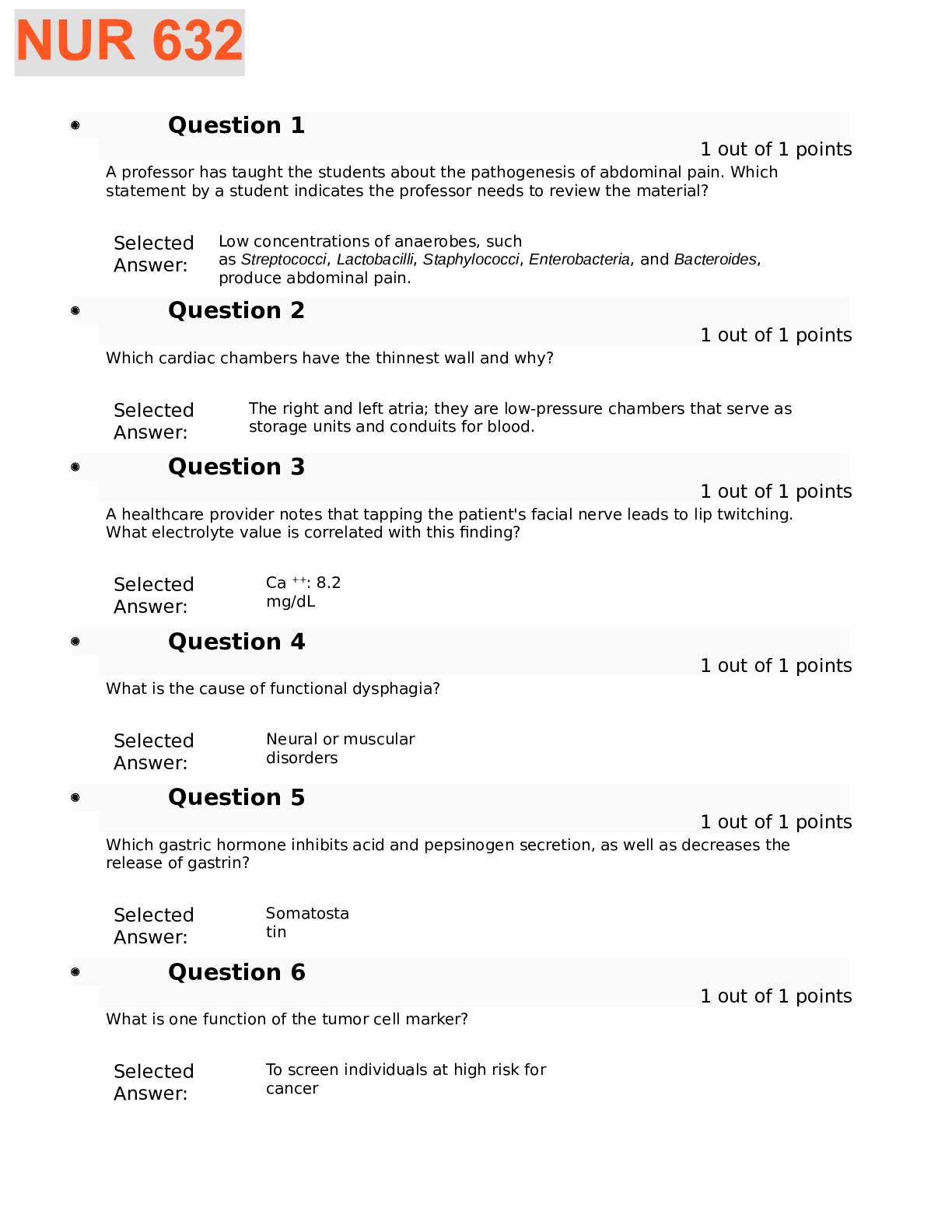
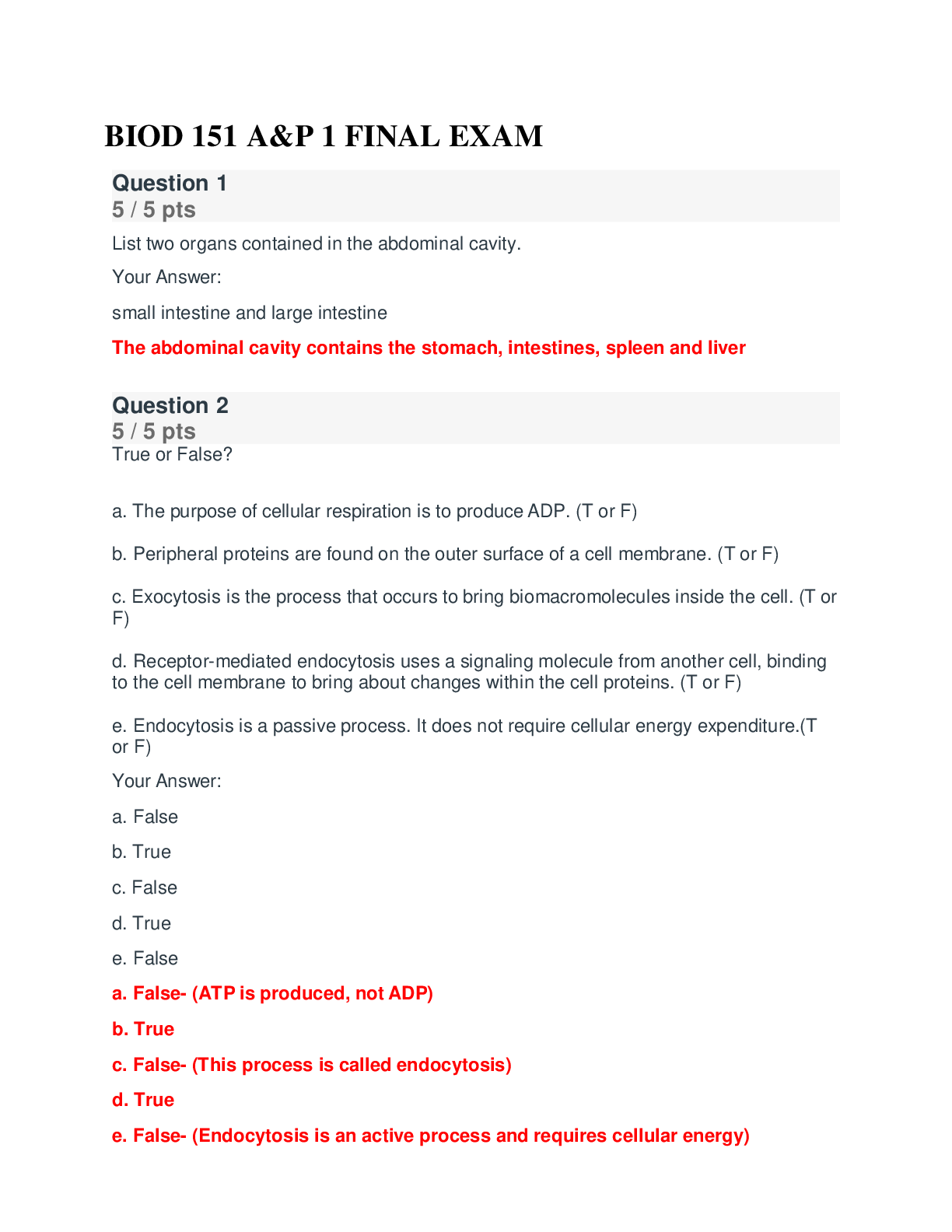

.png)

